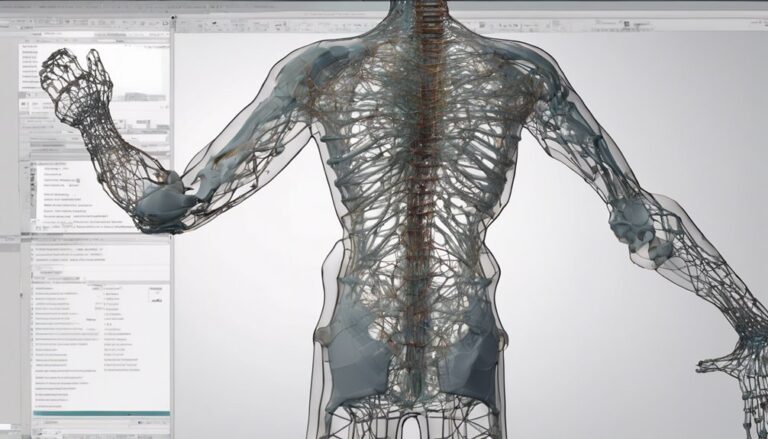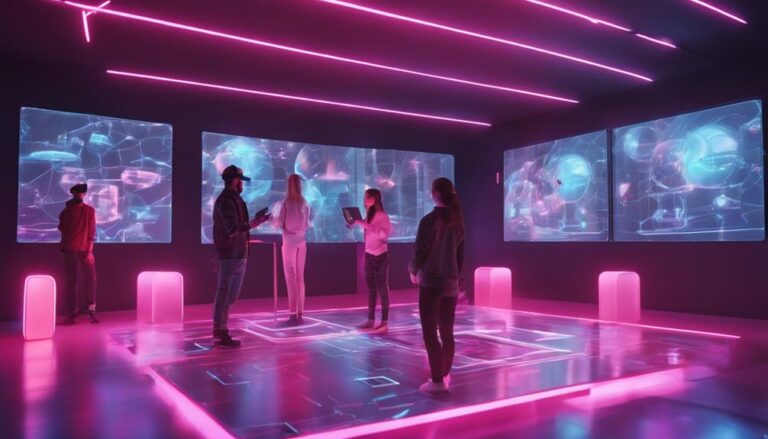Early 20th Century Animation: 3 Key Developments
In the early 20th century, three key developments transformed the animation landscape. First, the introduction of cel animation allowed artists to mass-produce high-quality images, freeing them to focus on character movement and storytelling. Next, the incorporation of sound techniques enabled filmmakers to engage audiences more effectively, with sound design playing a crucial role in enhancing the cinematic experience. Finally, the emergence of character animation enabled animators to create believable, relatable characters, with pioneers like Walt Disney and Ub Iwerks refining techniques for crafting emotional connections with audiences. As you explore these developments further, you'll uncover the intricacies that defined this pivotal era.
Key Takeaways
- Cel animation revolutionized the medium by allowing artists to mass-produce high-quality images with layered hand-painted celluloid sheets.
- The introduction of sound techniques enabled filmmakers to engage audiences more effectively and expanded creative possibilities for animators.
- Character animation emerged in the 1920s and 1930s, with pioneers like Walt Disney and Ub Iwerks refining techniques for creating believable characters.
- Drawing tools like pencils, inks, and paints enabled artists to craft intricate, expressive characters and environments in early 20th century animation.
Development of Cel Animation
As you plunge into the early 20th century animation landscape, you'll notice that the development of cel animation revolutionized the medium, allowing artists to mass-produce high-quality images by layering hand-painted celluloid sheets over static backgrounds.
This innovative technique, pioneered by studios like Bray and Barre, enabled animators to focus on character movement and storytelling, rather than labor-intensive background painting.
With cels, artists could easily reuse and reconfigure elements, streamlining the production process.
To achieve consistency and cohesion, animators relied on color scripts, detailed documents outlining the color palette and visual approach for each scene.
These scripts guaranteed that the final product met the director's vision, while also facilitating communication among team members.
In conjunction with color scripts, drawing tools like pencils, inks, and paints allowed artists to craft intricate, expressive characters and environments.
The precision and control afforded by these tools enabled animators to push the boundaries of storytelling, experimenting with new techniques and styles.
As you explore the early 20th century animation landscape, you'll see how the development of cel animation, color scripts, and drawing tools converged to elevate the art form, paving the way for future innovations.
Introduction of Sound Techniques
Typically, the advent of sound in early 20th century animation marked a pivotal turning point in the medium's evolution, enabling filmmakers to engage audiences more effectively through synchronized music, sound effects, and dialogue.
As you explore the introduction of sound techniques, you'll notice the vital role sound design played in enhancing the overall cinematic experience. Filmmakers carefully crafted soundtracks to complement the visual elements, creating a more immersive experience for viewers.
You'll also observe the innovative approaches to microphone placement, which allowed for greater control over sound recording and mixing. By strategically placing microphones during the recording process, sound engineers could isolate specific sounds, reduce background noise, and create a more balanced audio mix.
This attention to detail in sound design and microphone placement substantially contributed to the development of early 20th century animation. The incorporation of sound techniques expanded the creative possibilities for animators, enabling them to experiment with new narrative styles and emotional resonance.
As you consider the impact of sound on early animation, you'll appreciate the complex interplay between visual and auditory elements that defined this pivotal moment in the medium's history.
Emergence of Character Animation
During the 1920s and 1930s, the art of character animation began to take shape, with pioneers like Walt Disney and Ub Iwerks refining techniques for creating believable, relatable characters that could convey complex emotions and personalities through subtle movements and expressions.
As you examine this period, you'll notice that animators were becoming more sophisticated in their storytelling techniques, using character animation to create emotional connections with their audiences.
Consider the following examples of character animation from this era:
- Oswald the Lucky Rabbit's exaggerated facial expressions and body language, which added a layer of humor and personality to his cartoons
- Mickey Mouse's endearing and mischievous personality, which was conveyed through his movements and interactions with other characters
As you analyze these examples, you'll see how character animation was used to create a sense of depth and nuance in early 20th century cartoons. By developing relatable characters and using subtle animation techniques, animators were able to craft engaging stories that resonated with audiences on an emotional level.
Frequently Asked Questions
What Was the First Animated Film Ever Created?
You're likely wondering what the first animated film was. During the silent era, cinematic pioneers like Émile Cohl experimented with techniques, leading to the creation of "Fantasmagorie" (1908), a groundbreaking short film considered the first fully animated movie.
Who Invented the First Animation Camera?
You're likely wondering who invented the first animation camera. Historically, it was Émile Cohl, a French caricaturist, who developed the first animation camera in 1908, drawing inspiration from Étienne-Jules Marey's chronophotography, marking a pivotal moment in camera evolution.
What Is the Difference Between Anime and Cartoon?
You'll notice the difference between anime and cartoons lies in their cultural influences and historical roots. Anime, originating from Japan, often incorporates unique visual styles and storytelling, whereas cartoons, with Western roots, tend to be more varied in style.
Can Anyone Create Their Own Animated Film?
You can create your own animated film, leveraging creative freedom and accessible technology to bring your vision to life. Indie animators, like you, can now produce high-quality content, experimenting with styles and techniques.
What Is the Most Expensive Animated Film Ever Made?
You're likely wondering what's the most expensive animated film ever made. It's Avatar (2009), with budget overruns pushing costs to $237 million. However, it shattered box office records, grossing over $2.788 billion worldwide, justifying the expense.
Conclusion
As you reflect on the early 20th century animation landscape, it's clear that three pivotal developments revolutionized the medium.
The introduction of cel animation streamlined production, allowing for greater efficiency and consistency.
The incorporation of sound techniques added depth and emotional resonance to films.
Meanwhile, the emergence of character animation enabled studios to craft relatable, endearing personalities that captivated audiences worldwide.
These innovations collectively elevated animation from a novelty to a sophisticated art form.







